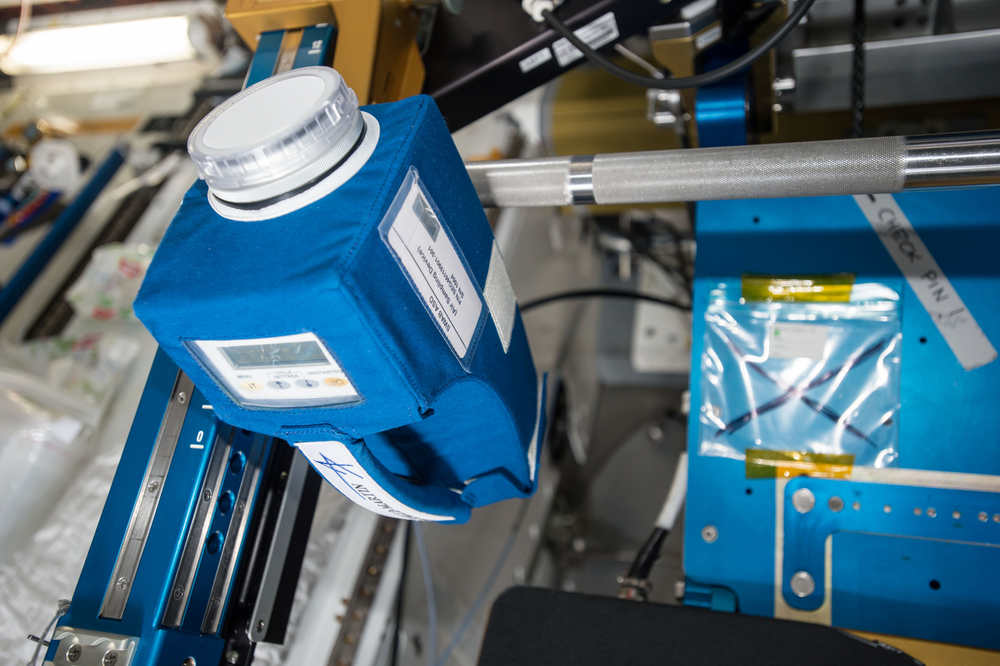Station Science Top News: Dec. 1, 2023
A noteworthy and exciting first for Station Science Top News: This week’s results all appear in top-tier journals. These are journals that publish high-quality scientific articles that undergo rigorous peer review and are ranked in the top 100 by Clarivate, a global analytics firm. As of the end of fiscal year 2022, research on station has generated a total of more than 3,000 peer-reviewed published papers. More than 500 of those papers have been in top-tier journals, with 68% of those published within the past five years. Citation impact factors from International Space Station-related published research have almost always exceeded both the U.S. and global baselines since calendar year 2011.
***
Research published in the top-tier journal Npj microgravity found that a chemically engineered molecule, BP-NELL-PEG, significantly increased bone formation in flight and ground control mice without obvious adverse side effects. Previous studies confirmed that Nel-like molecule-1 (NELL-1) is critical to bone density preservation and a chemically engineered version, NELL-PEG, improves drug delivery. BP-NELL-PEG shows promise as a potential therapeutic to mitigate bone loss during long-duration space travel and from musculoskeletal degeneration on Earth.
NELL-1 is a secreted protein that induces bone formation in multiple small and large animal models. Rodent Research-5 used bio-inert bisphosphonate (BP) to further engineer a previously modified form of NELL-1, called NELL-PEG, into BP-NELL-PEG to specifically target bone tissues. The BP improved binding and stability of NELL-PEG while preserving NELL-1’s bone-forming function. Microgravity causes a monthly 1% loss in bone mineral density, a critical challenge for long-duration spaceflight.
Read more here.
***
Researchers report in the top-tier journal Nature that they achieved the first production of a dual-species Bose–Einstein condensate (BECs) in space formed from 87Rb (rubidium) and 41K (potassium). These results are an important step toward quantum tests of the universality of free fall (UFF) in space and support the investigation of aspects of quantum chemistry and fundamental physics without the interference of gravity.
The space station’s Cold Atom Lab produces clouds of atoms that are much colder than deep space. Ultracold temperatures amplify quantum effects, allowing scientists to better study fundamental behaviors. Einstein’s classical theory of general relativity is based on the UFF, which requires that the trajectory of an object in space-time is independent of its composition. Free fall allows further cooling and microgravity enhances the interplay between ultracold temperatures and quantum phenomena. Space-based ultracold atomic physics could produce transformative discoveries in gravity science, cosmology, the nature of dark energy and dark matter, and quantum simulations of interacting many-body systems.

***
Six strains of bacteria isolated from the space station include five rare and novel species, according to a paper in Scientific Reports, a top-tier journal. Identifying and tracking microbes in space allows researchers to determine species composition, track microbial dispersion, and anticipate potential threats to human health, helping to ensure the safety and success of future missions.
Long-term human habitation in space and on the Moon requires understanding how the microbiome in these places differs from that of Earth habitats and knowing how microbes survive, proliferate, and spread in space. Microbial Tracking-2 continues more than a decade of monitoring of microbes on the space station, cataloging and characterizing those that might cause disease to help scientists understand the risk to the crew and equipment. In addition, microbes are used for many purposes on Earth, including manufacturing of drugs, food, and vitamins and for plant growth enhancement. On future long-duration missions, only microbes found on a spacecraft or habitat will be available for such purposes. Researchers predict that these undescribed species could be useful for such applications.








